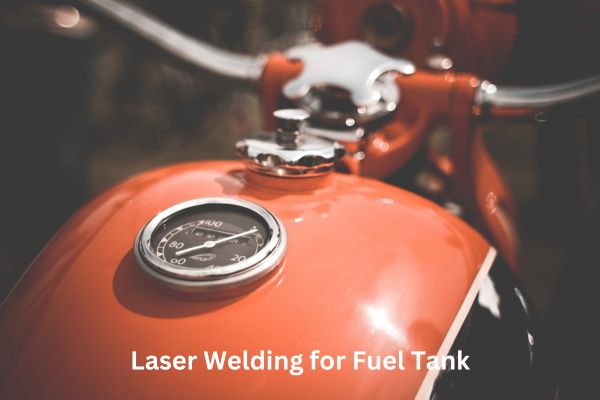

Laser Welding for Fuel Tank
In the dynamic world of motorcycle design, every component plays a very important role in performance of this wonderful machine. The fuel tank is a quintessential element, storing and delivering fuel to power the engine. Within the fuel tank assembly, the welding of the collar—a critical interface for fueling—is a pivotal application demanding precision and durability.
So, Laser technology is a very good option for welding of fuel tanks Let’s explore Laser Welding applications for fuel tanks in this blog.
Requirements:
For the application to work properly, there are some guidelines, as to how the weld quality should be and which conditions should be satisfied :
- Leak Proof: The fuel tank must be able to maintain the fuel safely, without letting it leak.
Also, external contaminants from the surroundings must not mix with the fuel, which affects the fuel quality and overall combustion process.
For this, the weld joint between the collar and the fuel tank must be leak proof. - Weld Strength: The fuel tank must be able to withstand harsh environments, vibrations and all the external impacts.
For this, the weld joint between the fuel tank and collar must be sufficiently strong.
Challenges:
- Zero Gap Condition: Different motorcycle manufacturers have their unique design to make their product look aesthetically appealing.
Therefore, different motorcycle models have fuel tanks of different complex geometries.
Many times, this creates challenges in maintaining the zero gap condition between fuel tank hole and the collar, which is a basic prerequisite for any laser welding application.
Therefore, it demands unique fixture design and some other remedies for proper alignment between the collar and the fuel tank and maintaining the zero gap condition. - Porosity, blowholes and spatters: It is a very common practice among automobile and motorcycle manufacturers to give their components a protective coating of zinc or other protective material for corrosion resistance.
When welding, this protective coating turns into gas.
As the joint solidifies and fuses, this gas tries to escape, which causes spatters, blowhole and porosity and adversely affects the weld quality.
Conclusion:
Although, any application has some prerequisites and challenges, it is possible to carry out the application successfully with proper precautions and solutions. With proper knowledge about laser applications and automation, it is possible to carry out the fuel tank welding application successfully, and get an excellent, pore free, leak proof welding.
We at Laser Automation have been working with laser applications since 2009, have our own application lab , laser application experts, and skilled technicians, and our own design team with in-depth knowledge about automation.
With our expertise in laser application and automation, we can provide a special purpose laser welding machine tailored to customer’s specific needs and provide a turn key solution.
For any inquiries, please feel free to contact us .
